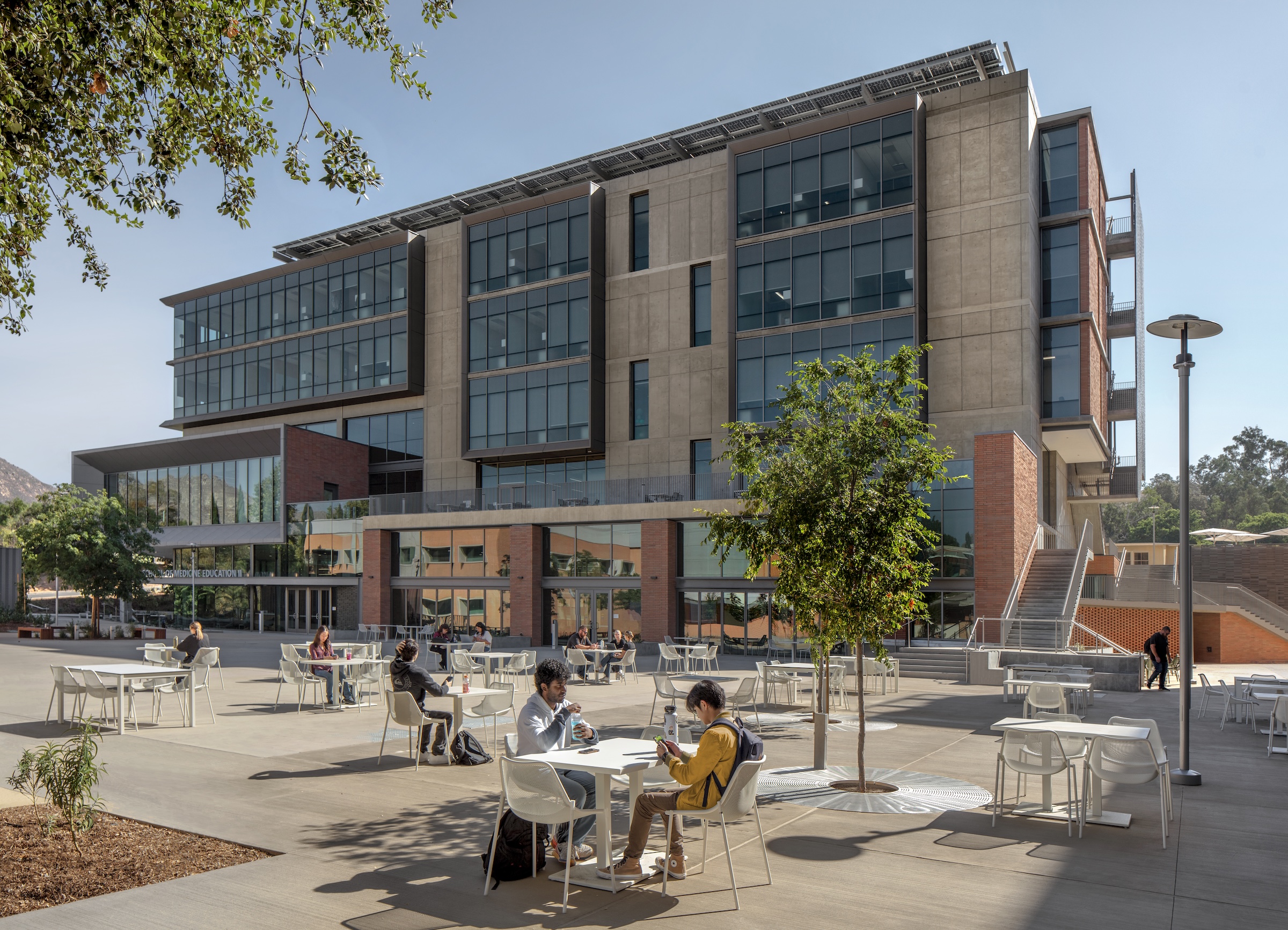The University of California, Riverside, School of Medicine has opened the 94,576-sf, five-floor Education Building II (EDII). Created by the design-build team of CO Architects and Hensel Phelps, the medical school’s new home supports team-based student learning, offers social spaces, and provides departmental offices for faculty and staff.
The learning spaces are located on the first three floors, while the administration and shared functions are housed on the top two floors. The building features interactive classrooms, 15 case-based group seminar rooms, variously sized study rooms, and additional study and amenity spaces.
The building includes materials, such as cast-in-place concrete, brick, terracotta, and glass, that are meant to be both beautiful and durable, lasting for generations.
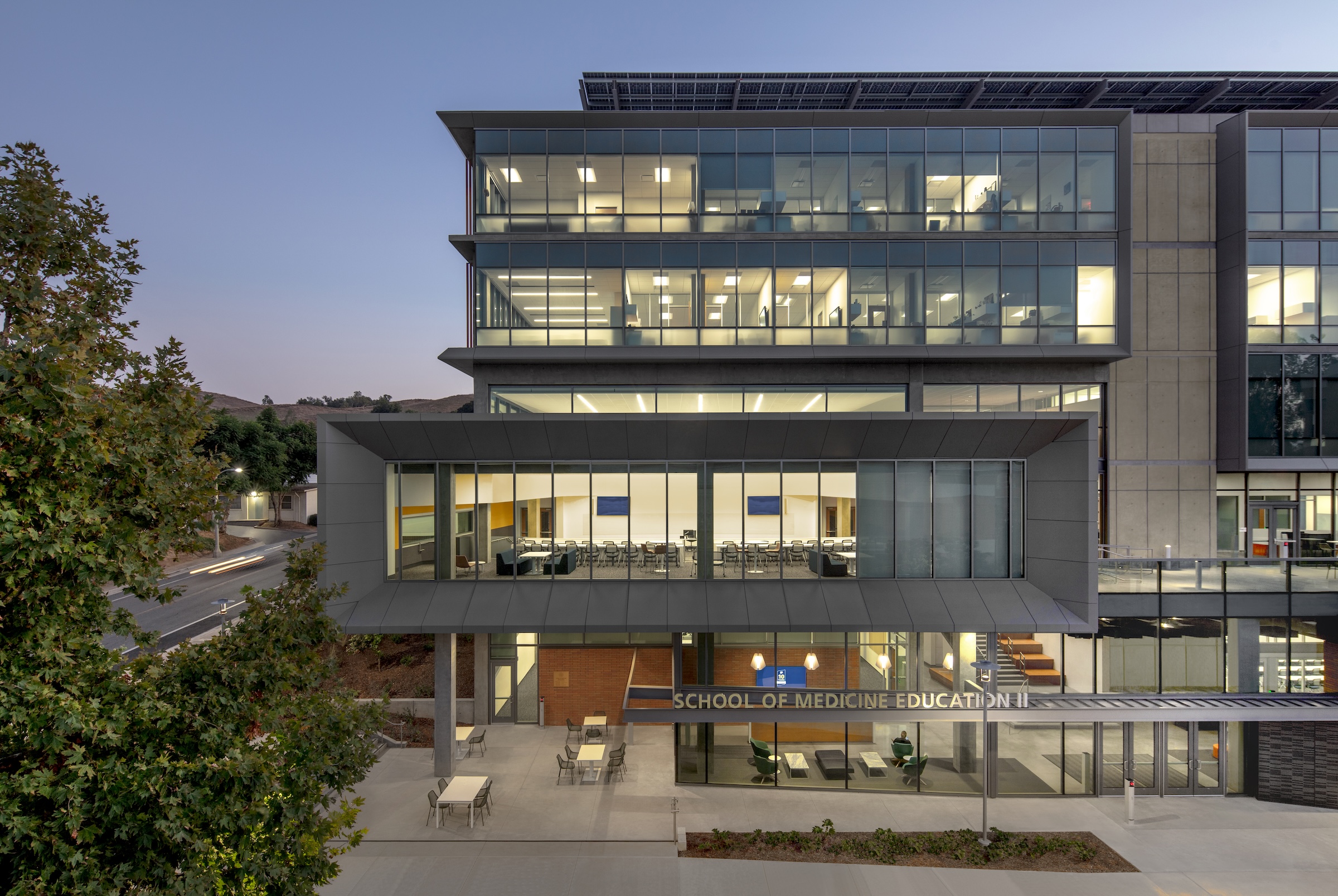
EDII’s design emphasizes transparency to help demystify medical education and welcome prospective students from diverse backgrounds. The use of transparency and shading leverages passive light, prevailing breezes, and solar heat gain. A rooftop solar array contributes to the building’s energy efficiency.
Each façade is optimized for the climate and for varying levels of sun exposure throughout the day. On the east façade, vertical glass fiber reinforced concrete (GFRC) fins create extended shadows and protect the interior from the harsh morning light. Painted perforated aluminum panels shade the east and west exit stairs as well as the south façade’s windows. The porous north façade features abundant glass and walls opening to the courtyard.
Located in a drought-prone region, the building restores the site’s natural vegetative conditions. The ground-level plaza connects the surrounding buildings.
Inside, a three-story perforated gypsum mural depicts an abstraction of orange groves, referencing the region’s history.
On the Building Team:
Owner: UCR School of Medicine
Architect/interior designer: CO Architects
Contractor: Hensel Phelps
Landscape architect: Spurlock Landscape Architects
MEP engineer: P2S, Inc.
Structural engineer, waterproofing, LEED consultant: Thornton Tomasetti
Civil engineer: Albert A. Webb Associates
Geotechnical engineer: Langan
Fire protection engineer: Woden Fire
Acoustics consultant: Arpeggio
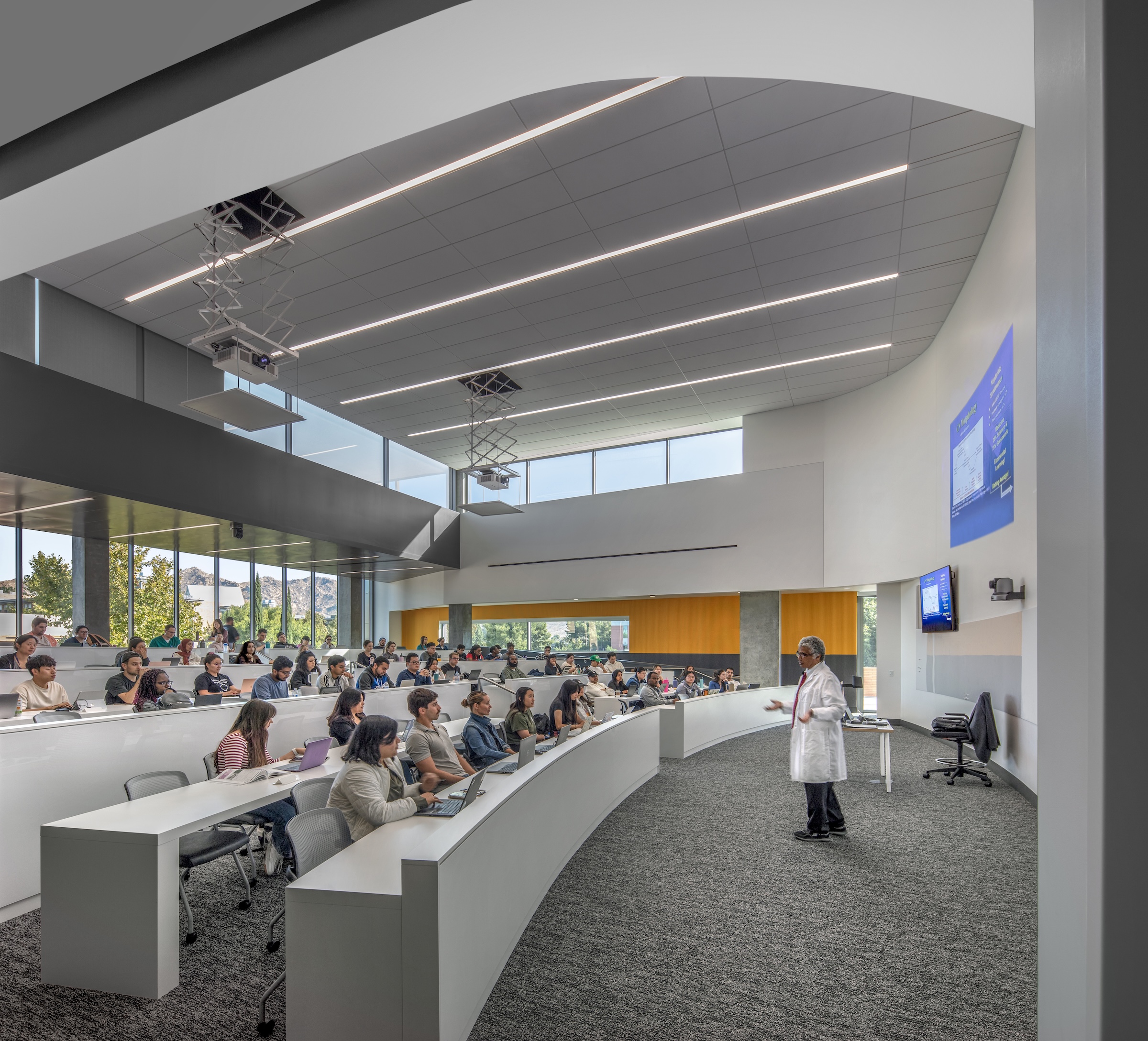
Here is the project essay from the design-build team of Hensel Phelps and CO Architects:
The School of Medicine (SOM) Education Building II (EDII) fulfills the mission of the University of California, Riverside (UCR), to train a diverse workforce of physicians to support the medically underserved Riverside County region of Southern California. The building by the design-build partnership of Hensel Phelps + CO Architects creates a new home for the medical school by incorporating a wide range of team-based student learning, social spaces, and departmental offices for faculty and staff into one 95,476-square-foot, five-story structure. Strategically located and highly visible on campus, the EDII amplifies the SOM’s identity as a forward-thinking medical school and showcases the mission and dedication of medical education to undergraduates and community members alike.
The design team and client shared the vision of crafting a building that supports its occupants and creates an environment to empower students throughout their academic experience and into their careers. The architecture utilizes transparency to demystify medical education, welcoming prospective students from diverse backgrounds to learn about the requirements and daily activities of medical students. EDII’s design is meant to be both beautiful and durable, utilizing materials—such as cast-in-place concrete, brick, terracotta, and glass—that fit within the campus context and will last for generations.
Each façade is optimized for the climate and levels of sun exposure throughout the day. Vertical glass fiber reinforced concrete (GFRC) fins on the east façade cast dramatic extended shadows while protecting interior spaces from the harsh morning light. Painted perforated aluminum panels—featuring custom patterns that resonate with the scale and pattern of the building’s brickwork—shade the east and west exit stairs, screening the stairs behind and creating a larger architectural feature on the façades.
The same panels are used on the south façade to shade individual windows. The staggered window placement is interspersed with brick infill stacked vertically in rows to signify the use of the brick as a façade skin, rather than as load-bearing elements. The north entrance face of the building is porous, both visually with abundant glass and structurally with walls opening out to the courtyard. Inside, a three-story perforated gypsum mural represents an abstraction of orange groves as a nod to the region’s history as the Orange Empire.
The materials palette provides flexibility for expansion over time and allowed construction details to be easily executed and built. During constructability review, the team modeled the different exterior connections and material intersections to digitally ensure the details were constructible and would stand the test of time with limited or no maintenance. Utilizing the design-build delivery method, the EDII was able to fit within a strict budget and a demanding schedule.

The EDII was designed with long-term sustainability in mind to ensure it will remain fully functional for generations to come while minimizing its carbon footprint. Located in a drought-prone region, the building defends and restores the natural vegetative conditions of the site. The EDII’s use of transparency and shading optimizes passive elements of light, prevailing breezes, and solar heat gain. The interiors and exteriors utilize durable, easy-to-maintain, and sustainable building materials, as well as low/no-VOC materials that promote healthy interior air quality and performance. A 200-kilowatt solar array on the roof contributes to its energy efficiency. The EDII will achieve LEED Platinum through its multiplicity of sustainability strategies in all building systems.
To maximize EDII’s lifespan, the design is flexible and adaptable to respond to growth as needs and pedagogy change. The building is organized with all the high-activity and student-centric learning spaces on the first three floors, which are more accessible and feature indoor/outdoor spaces, while administration and shared functions are located on the upper two floors. The EDII collocates most of the medical school’s staff, administrators, and faculty in the same building for the first time, creating greater efficiencies and moments for collaboration.
The medical school’s academic programs are supported by interactive classrooms, 15 case-based group seminar rooms, ample and various sized study rooms, and additional study and amenity spaces that work cohesively to integrate and support student engagement throughout the day and into the night. Throughout the building, the design team identified opportunities to enhance the program with high-profile spaces, such as an interactive tiered classroom that is universally accessible and features an abundance of daylight, state-of-the-art technology, writeup spaces, and informal lounge seating for breakout sessions.
Each level of the EDII capitalizes on the mild Southern California climate by providing outdoor environments that offer views and opportunities for collaboration, socialization, and reflection. An expansive plaza on the ground level connects and organizes the surrounding buildings, creating a new SOM Plaza for a wide variety of School of Medicine and campus events. EDII reinvigorates the area of campus in which it’s sited, creating opportunity for expansion to the south by developing a “Medical Walk”—a pathway that traverses from the health sciences library, across EDI (SOM’s first building), and through EDII, establishing an armature for future expansion.
Located on a constrained site, EDII uses the challenging terrain in innovative ways to create connections both externally to the campus and internally for users. Each grade level provides accessible opportunities to enter the building, maximizing the topographical nature of the site. By embracing the site’s challenges, EDII establishes meaningful and varied campus interfaces along all sides of the building. The design enriches the campus experience and encourages engagement with the larger campus and community of Riverside.
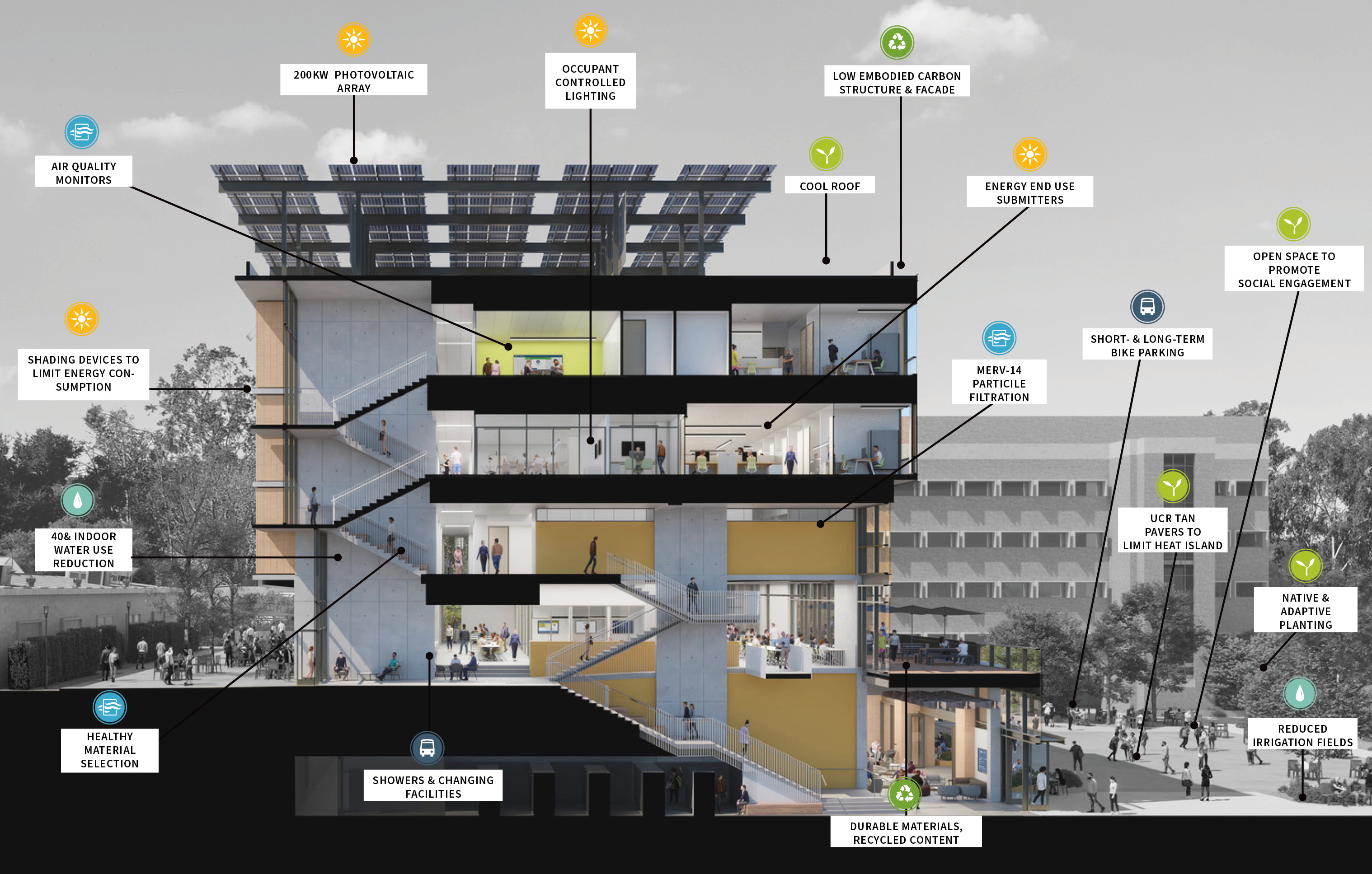
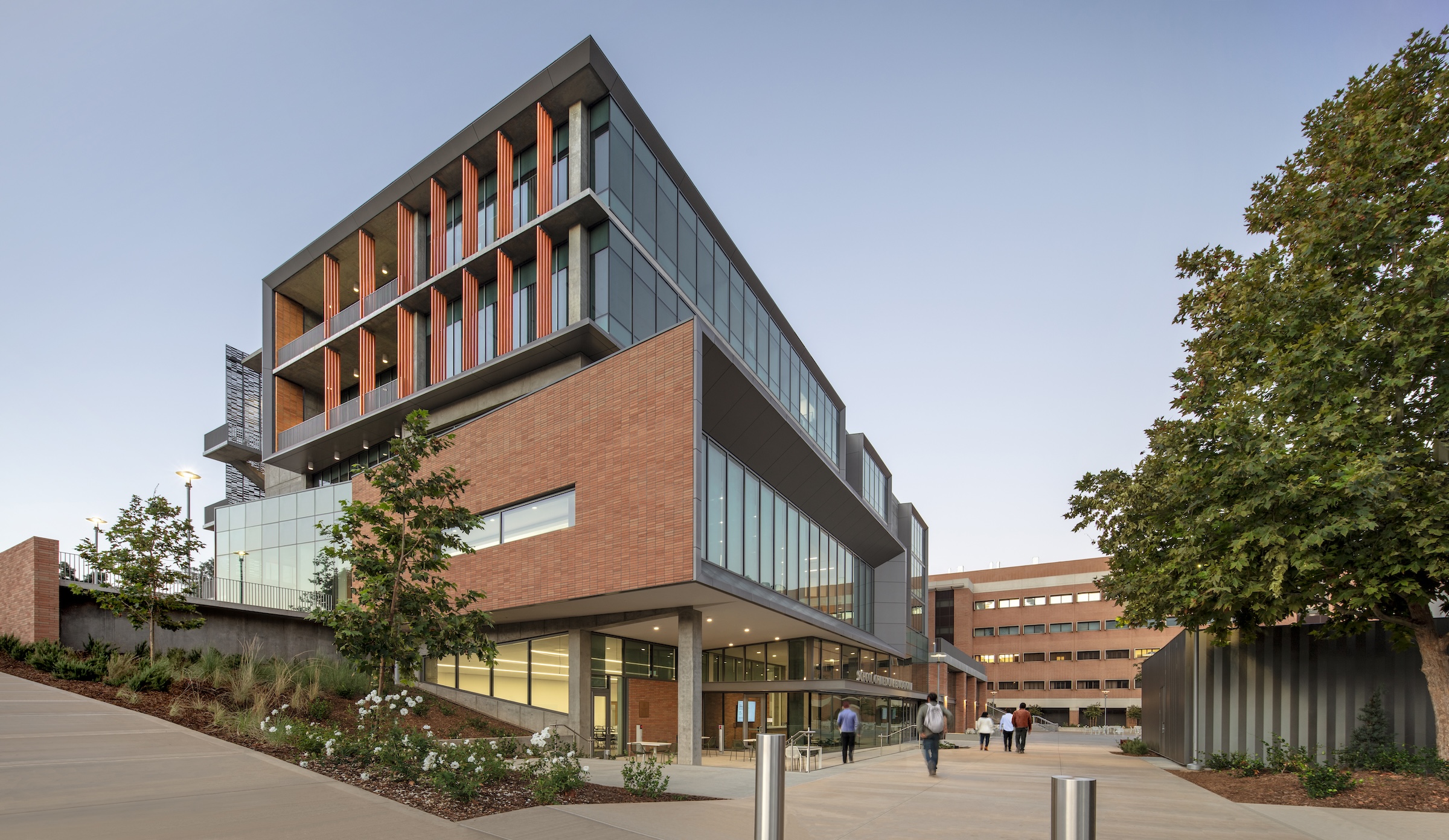
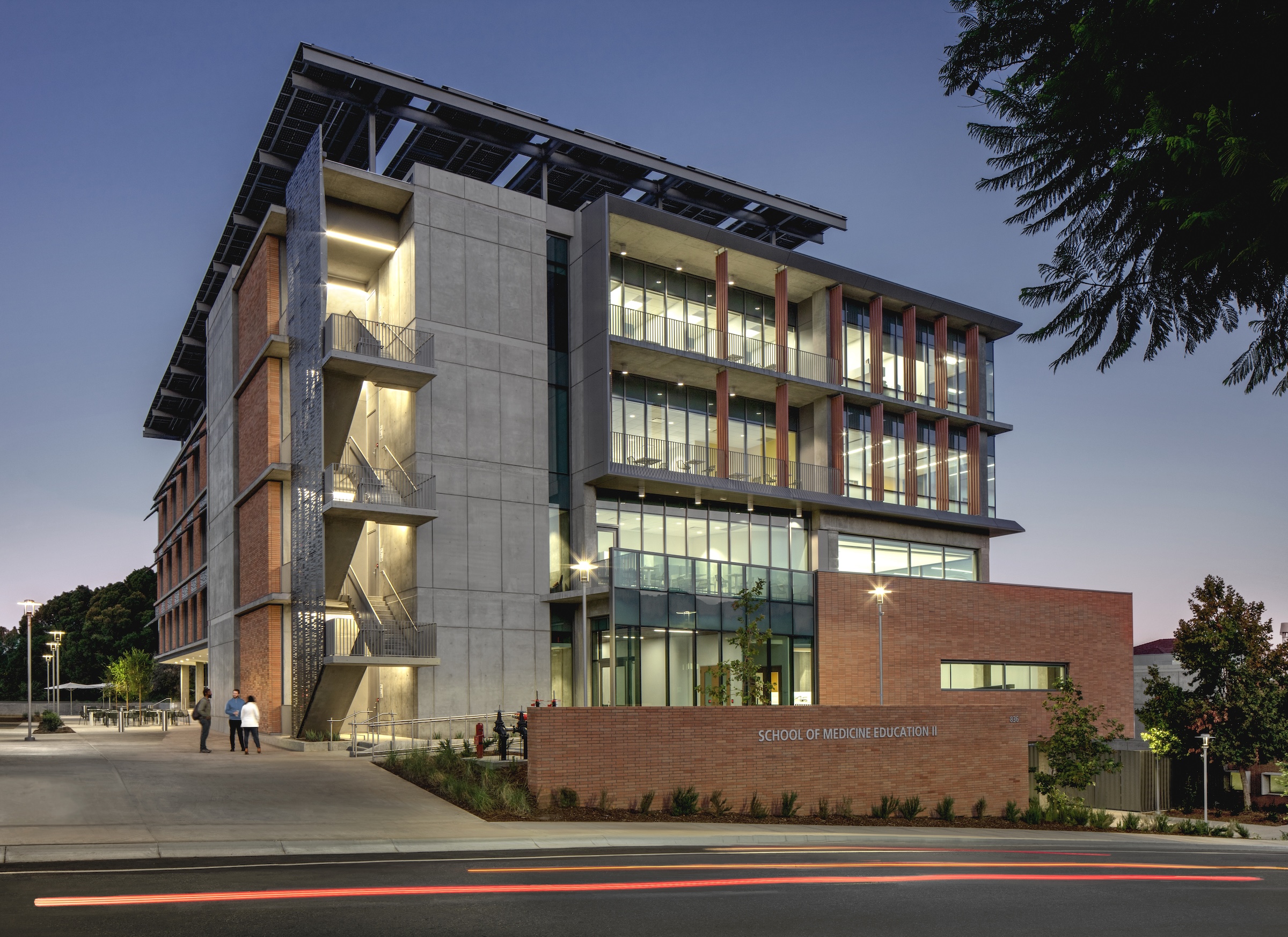
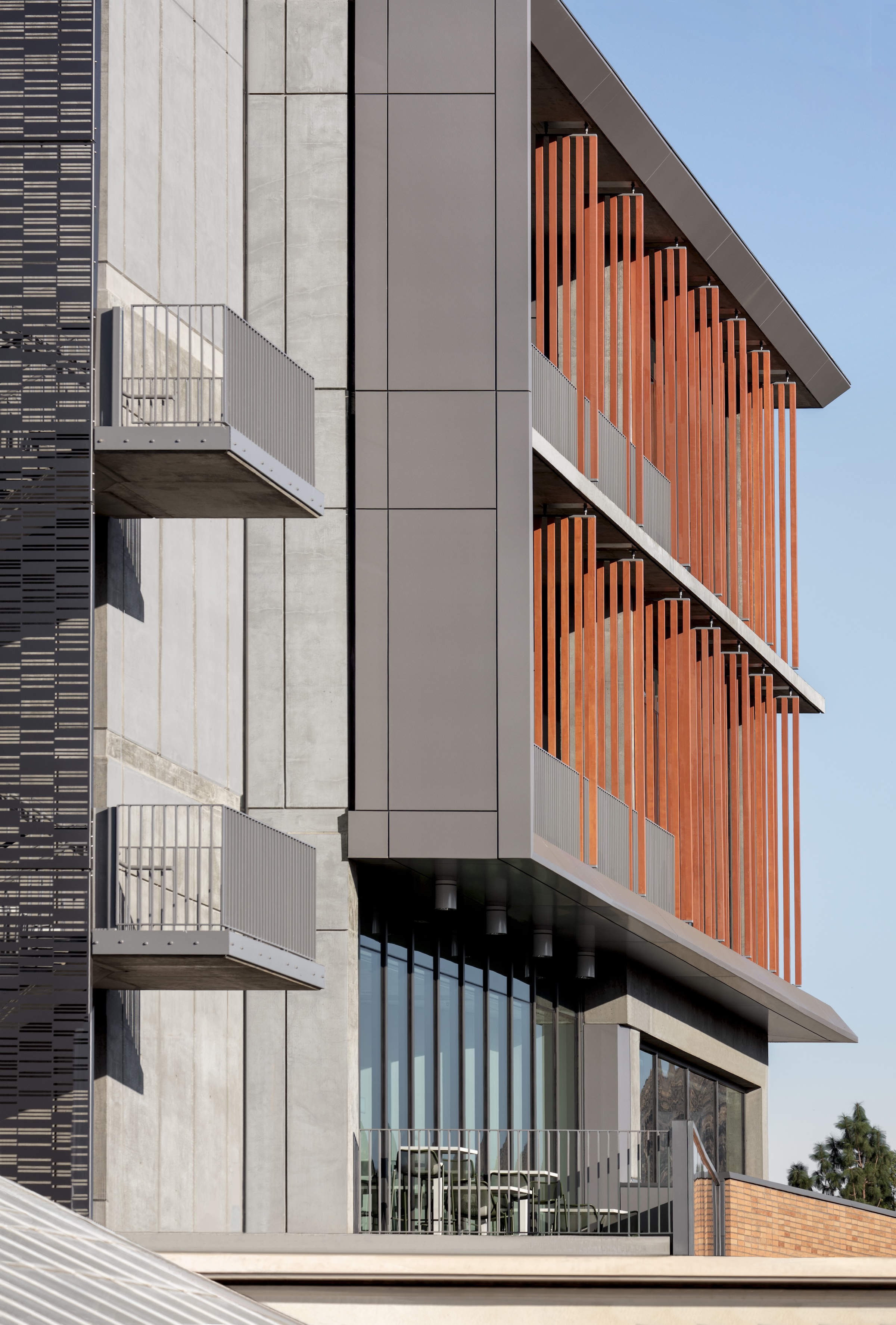

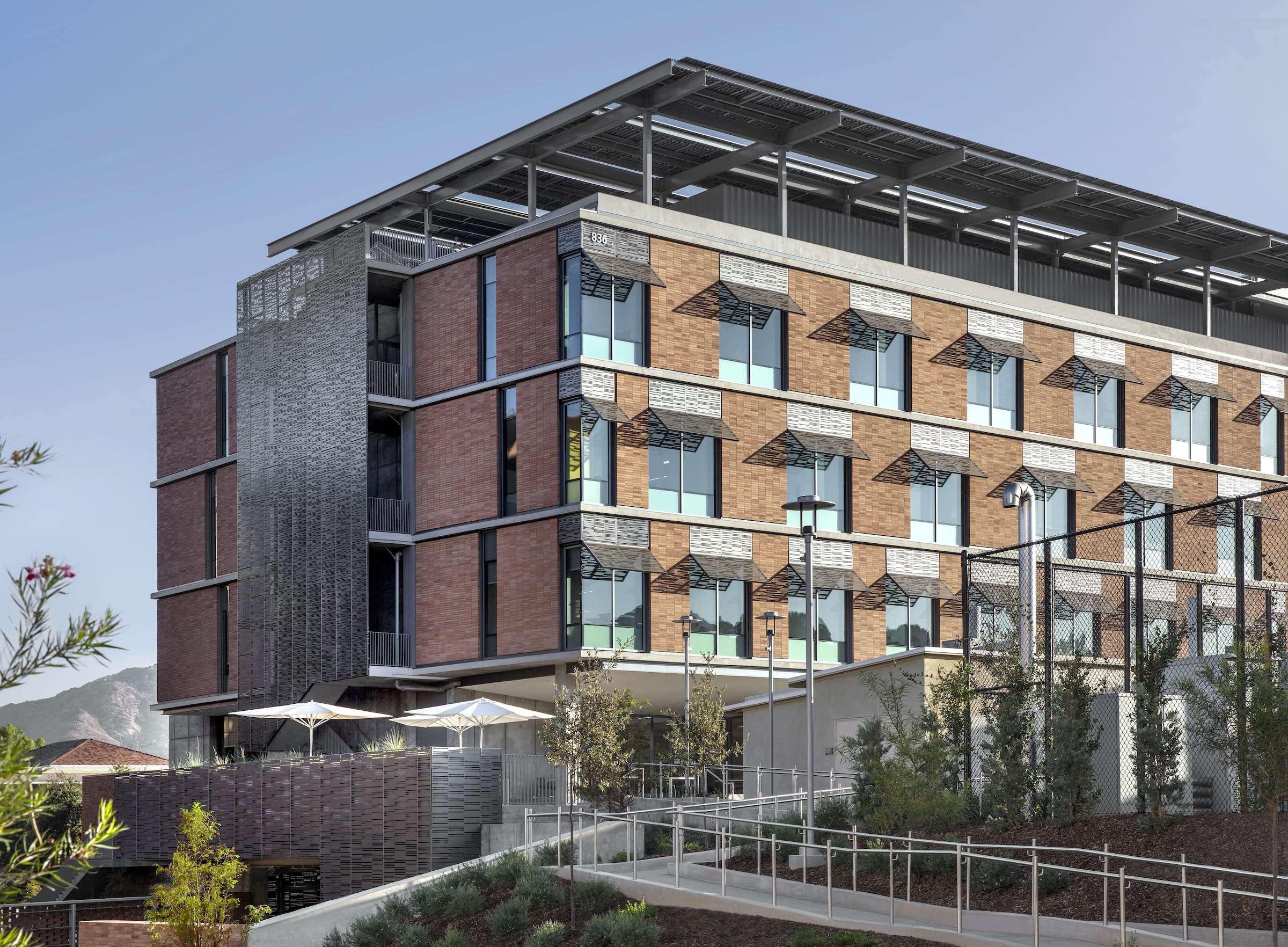

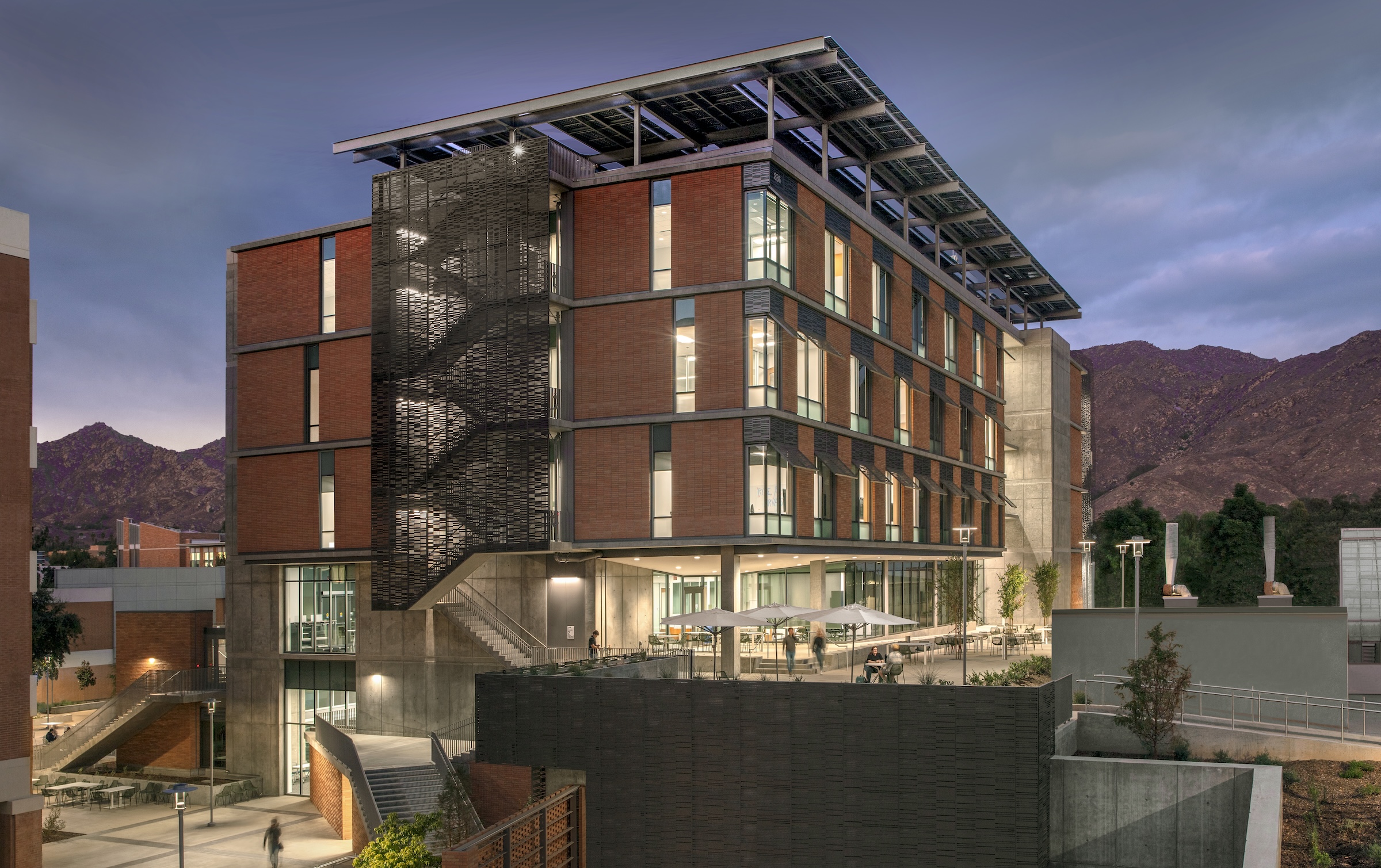
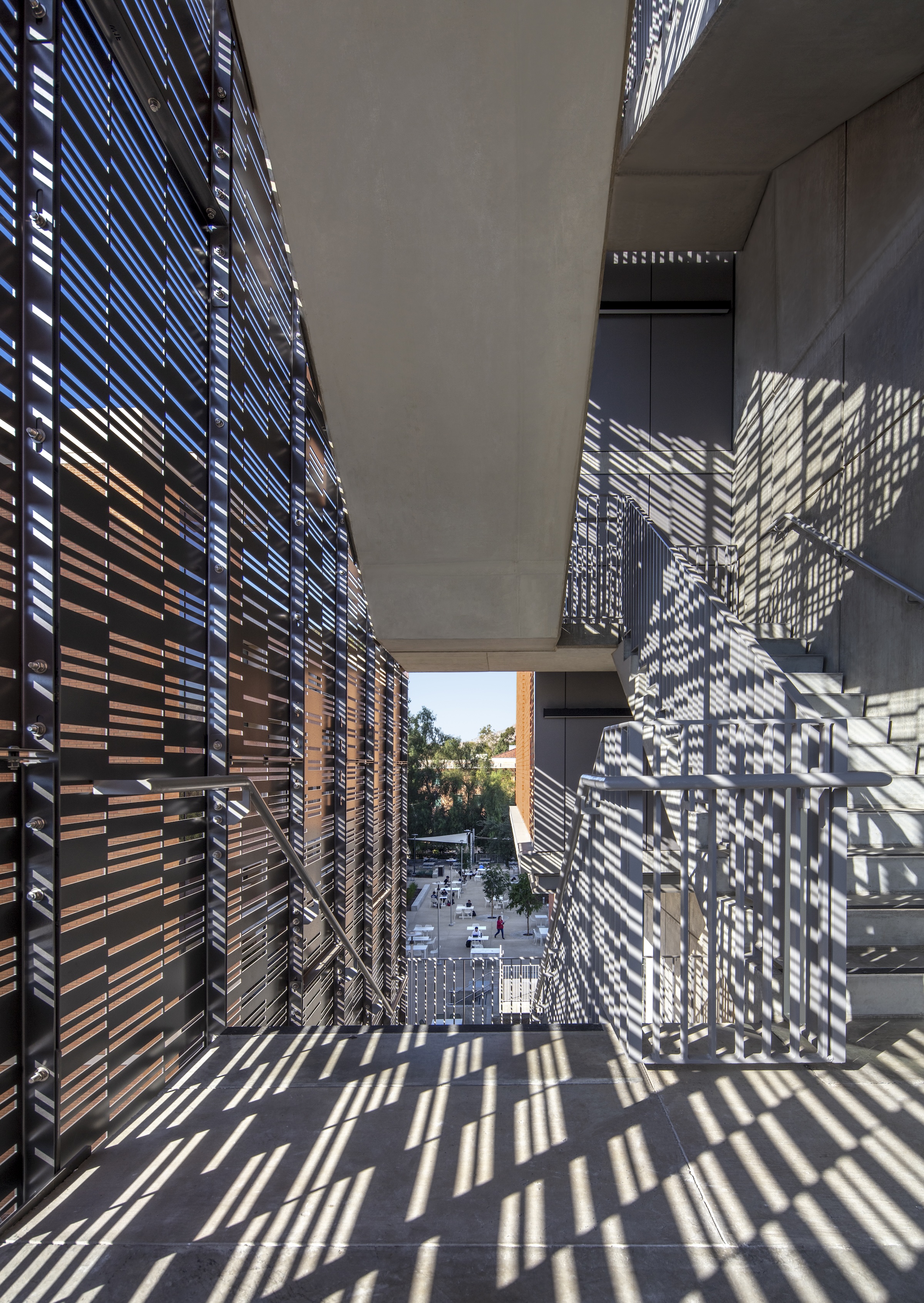
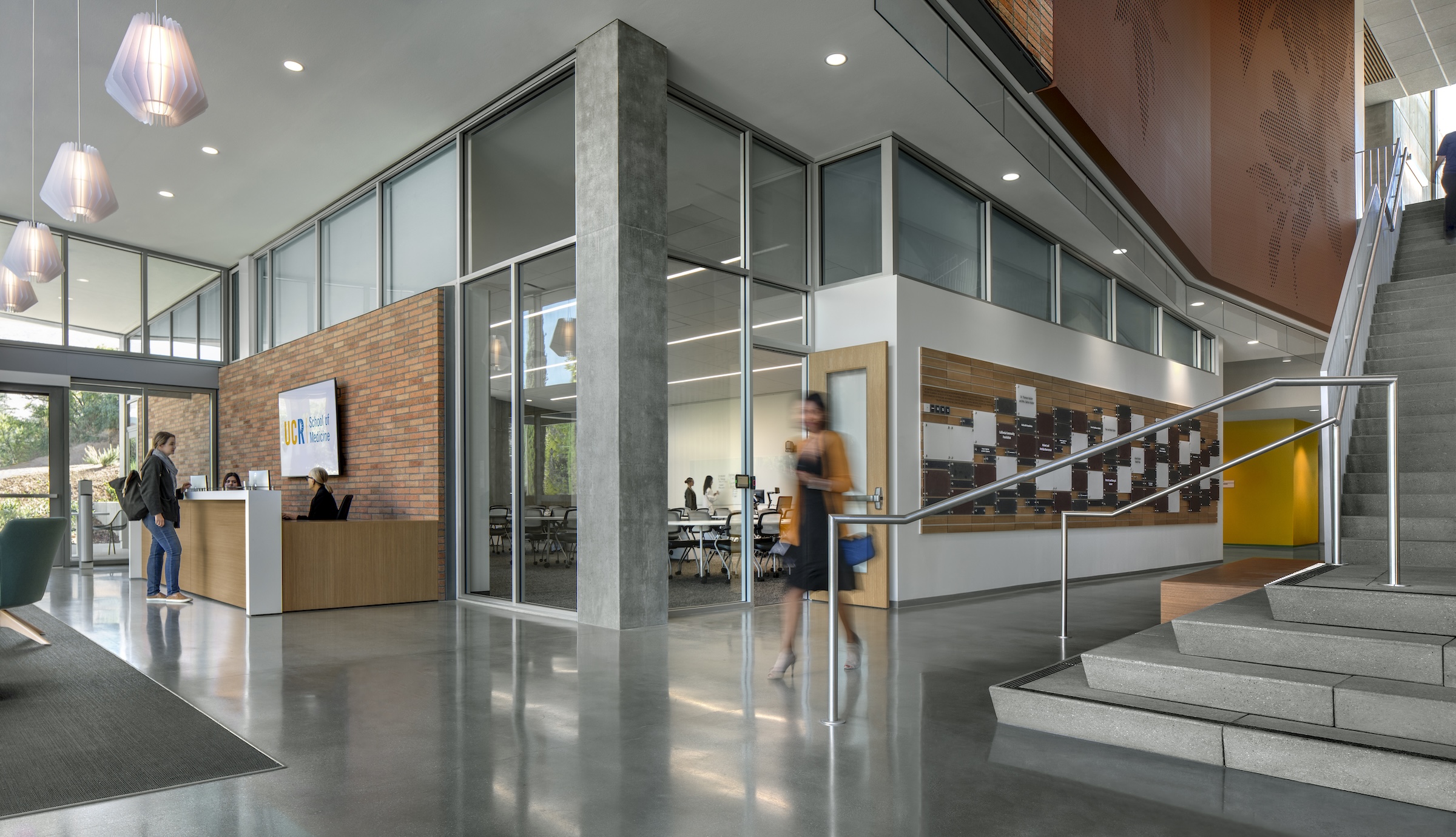

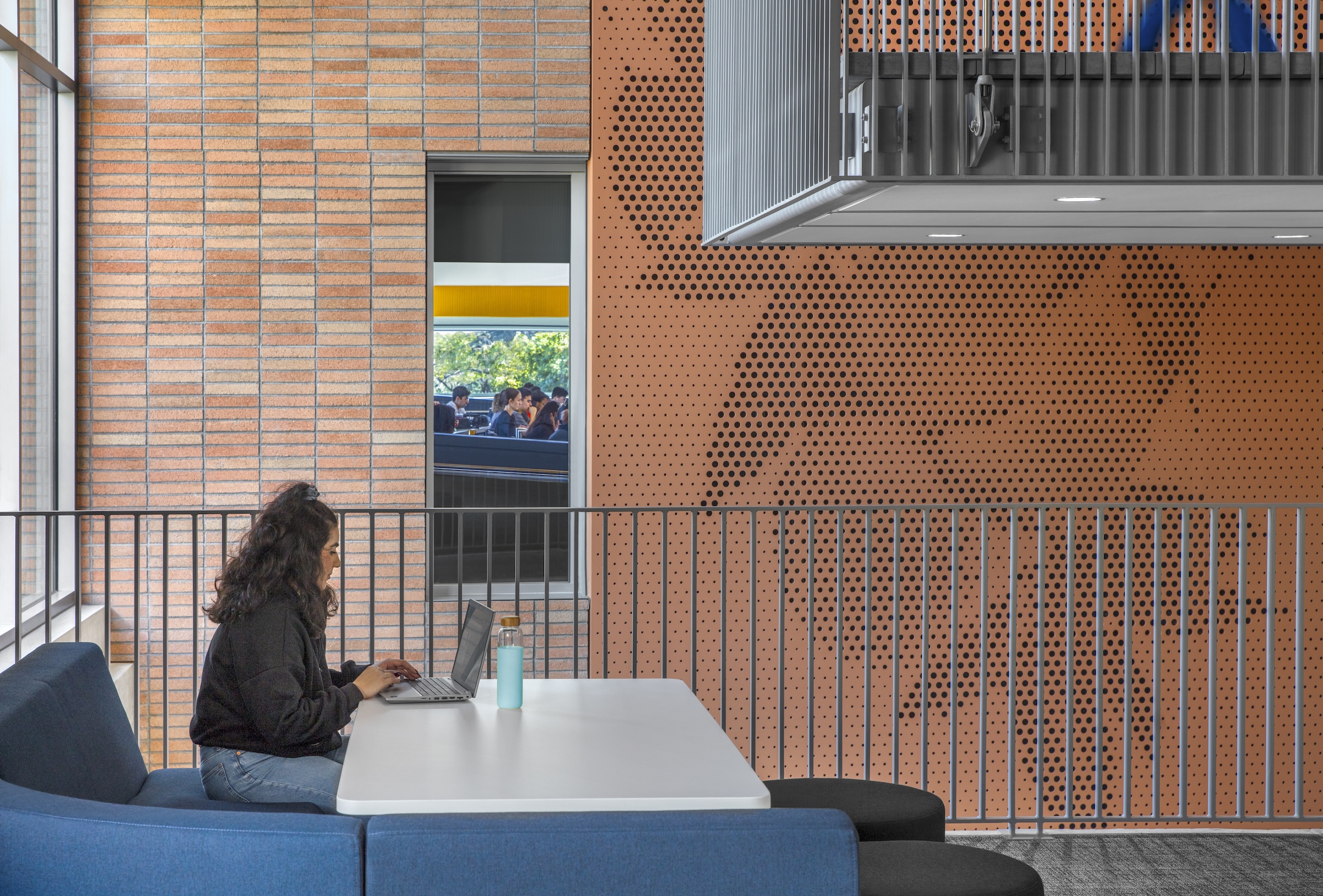
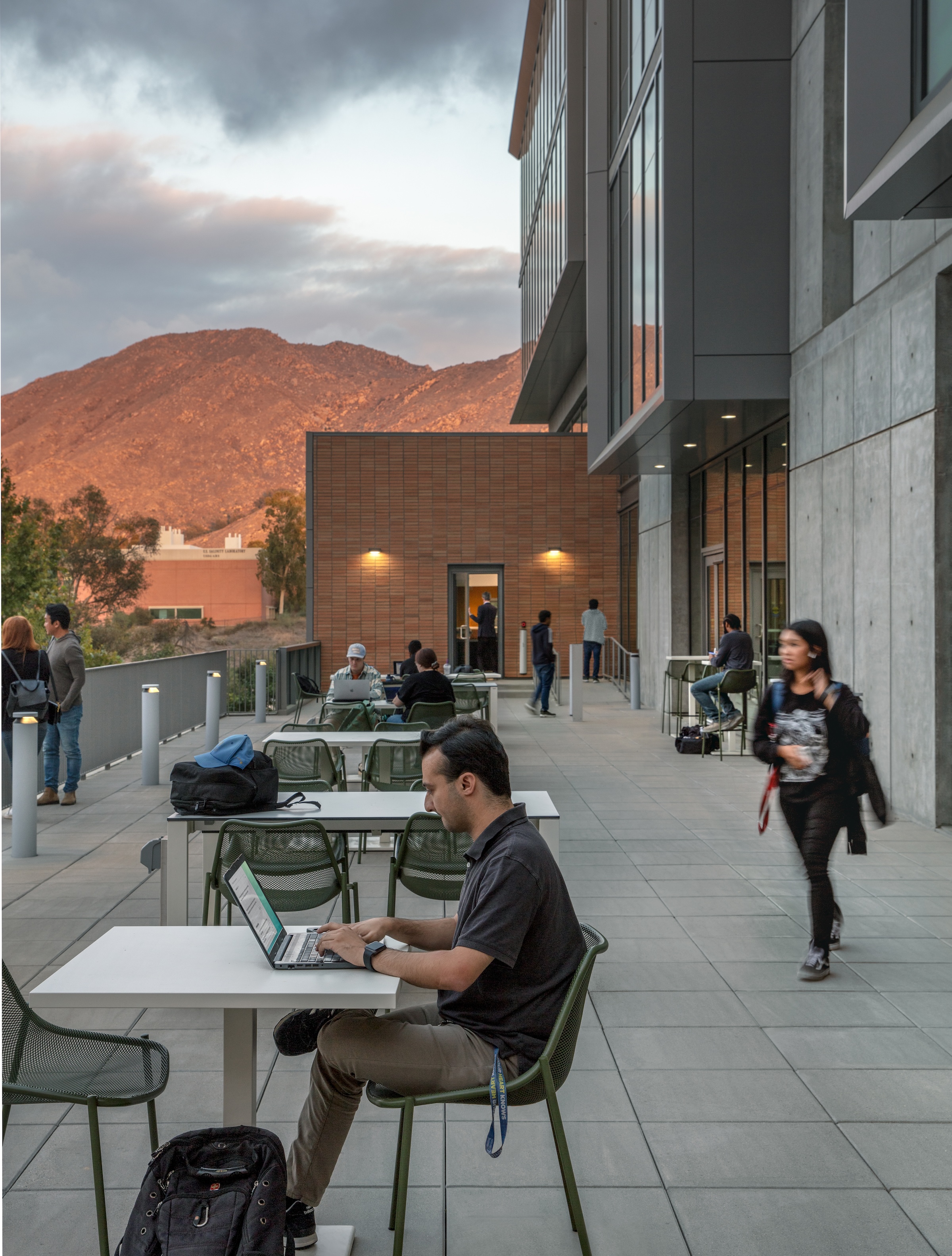
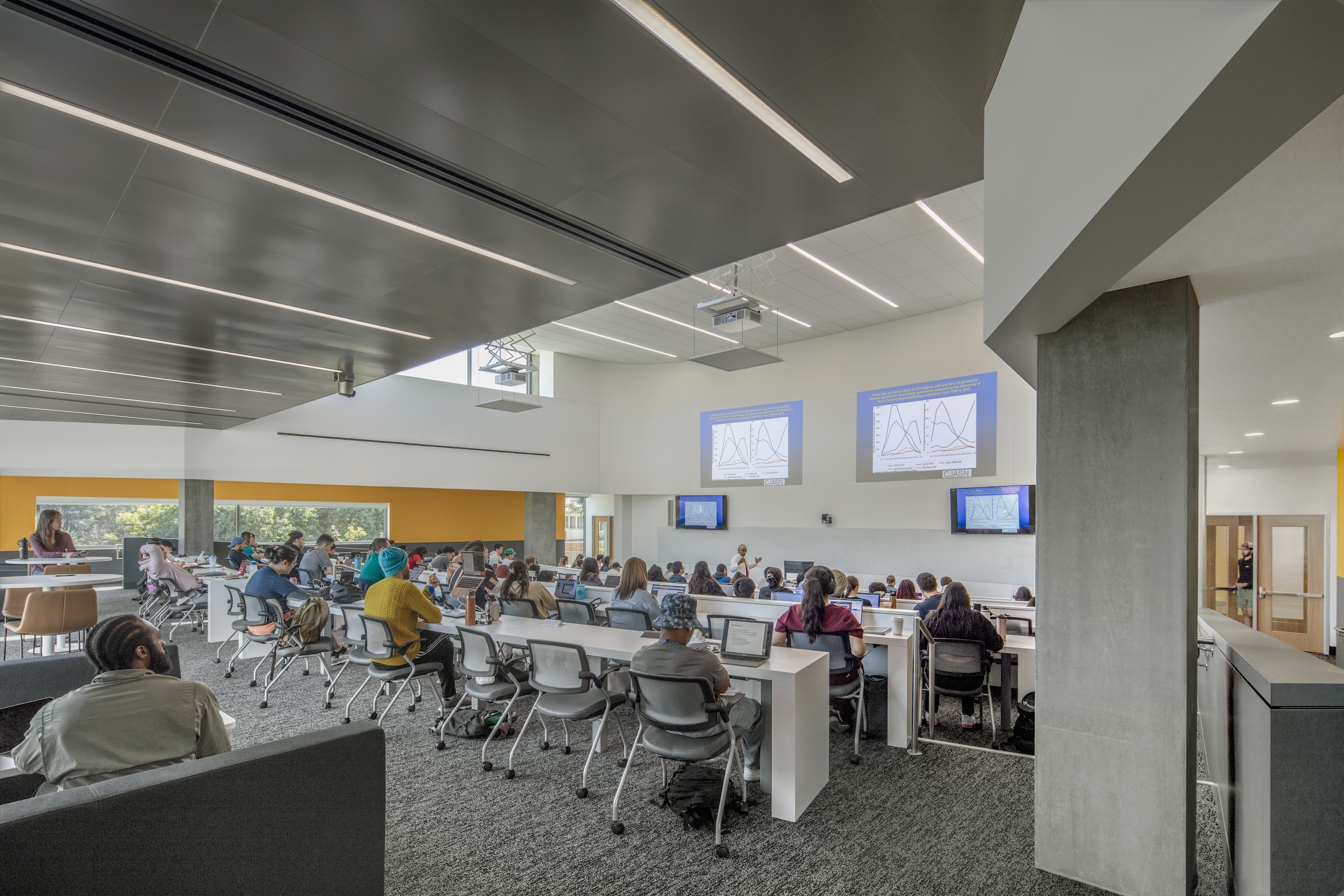

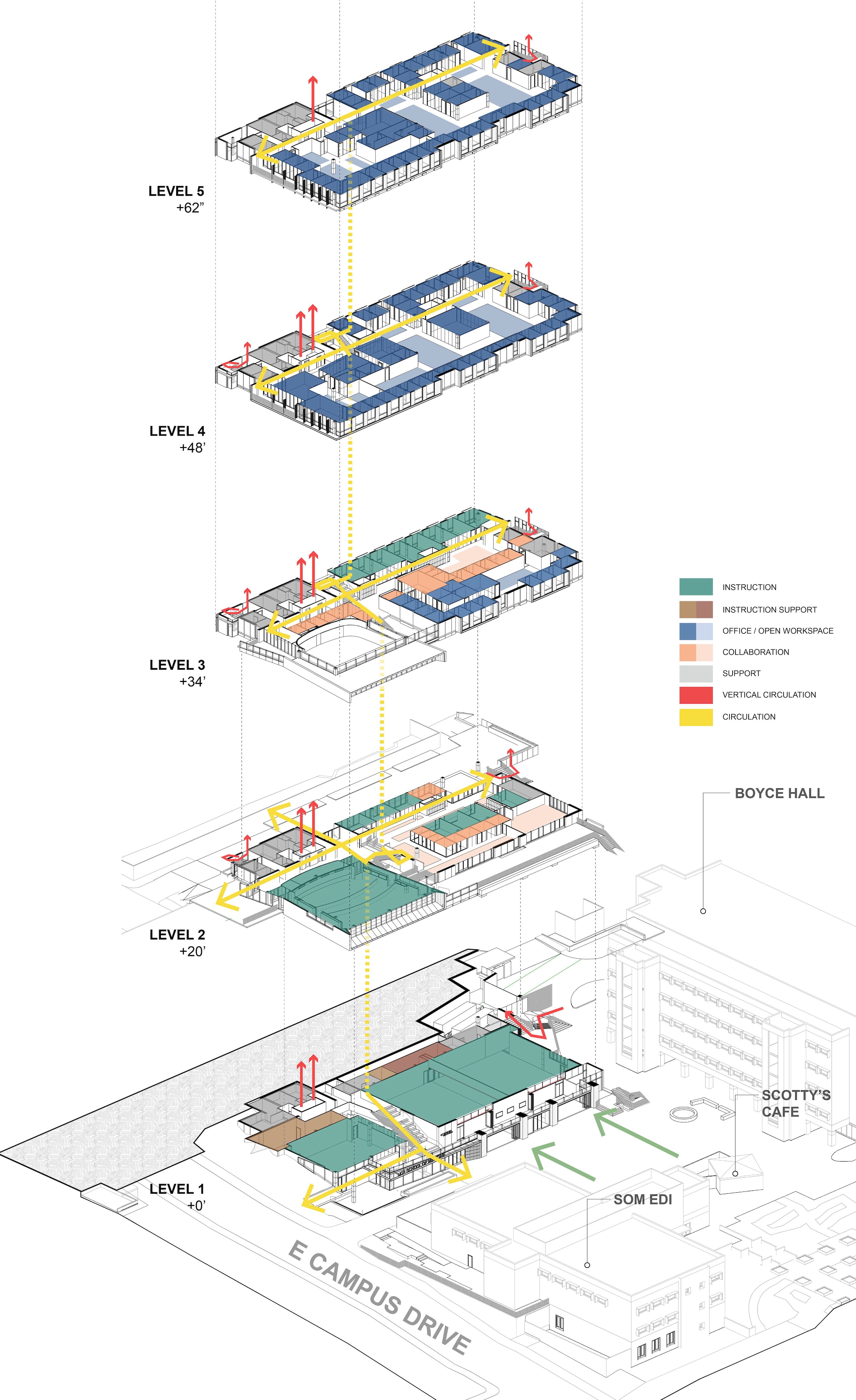
Related Stories
| Nov 3, 2010
First of three green labs opens at Iowa State University
Designed by ZGF Architects, in association with OPN Architects, the Biorenewable Research Laboratory on the Ames campus of Iowa State University is the first of three projects completed as part of the school’s Biorenewables Complex. The 71,800-sf LEED Gold project is one of three wings that will make up the 210,000-sf complex.
| Nov 3, 2010
Seattle University’s expanded library trying for LEED Gold
Pfeiffer Partners Architects, in collaboration with Mithun Architects, programmed, planned, and designed the $55 million renovation and expansion of Lemieux Library and McGoldrick Learning Commons at Seattle University. The LEED-Gold-designed facility’s green features include daylighting, sustainable and recycled materials, and a rain garden.
| Nov 3, 2010
Recreation center targets student health, earns LEED Platinum
Not only is the student recreation center at the University of Arizona, Tucson, the hub of student life but its new 54,000-sf addition is also super-green, having recently attained LEED Platinum certification.
| Nov 3, 2010
Virginia biofuel research center moving along
The Sustainable Energy Technology Center has broken ground in October on the Danville, Va., campus of the Institute for Advanced Learning and Research. The 25,000-sf facility will be used to develop enhanced bio-based fuels, and will house research laboratories, support labs, graduate student research space, and faculty offices. Rainwater harvesting, a vegetated roof, low-VOC and recycled materials, photovoltaic panels, high-efficiency plumbing fixtures and water-saving systems, and LED light fixtures will be deployed. Dewberry served as lead architect, with Lord Aeck & Sargent serving as laboratory designer and sustainability consultant. Perigon Engineering consulted on high-bay process labs. New Atlantic Contracting is building the facility.
| Nov 3, 2010
Dining center cooks up LEED Platinum rating
Students at Bowling Green State University in Ohio will be eating in a new LEED Platinum multiuse dining center next fall. The 30,000-sf McDonald Dining Center will have a 700-seat main dining room, a quick-service restaurant, retail space, and multiple areas for students to gather inside and out, including a fire pit and several patios—one of them on the rooftop.
| Nov 1, 2010
John Pearce: First thing I tell designers: Do your homework!
John Pearce, FAIA, University Architect at Duke University, Durham, N.C., tells BD+C’s Robert Cassidy about the school’s construction plans and sustainability efforts, how to land work at Duke, and why he’s proceeding with caution when it comes to BIM.
| Oct 13, 2010
Editorial
The AEC industry shares a widespread obsession with the new. New is fresh. New is youthful. New is cool. But “old” or “slightly used” can be financially profitable and professionally rewarding, too.
| Oct 13, 2010
Campus building gives students a taste of the business world
William R. Hough Hall is the new home of the Warrington College of Business Administration at the University of Florida in Gainesville. The $17.6 million, 70,000-sf building gives students access to the latest technology, including a lab that simulates the stock exchange.
| Oct 13, 2010
Science building supports enrollment increases
The new Kluge-Moses Science Building at Piedmont Virginia Community College, in Charlottesville, is part of a campus update designed and managed by the Lukmire Partnership. The 34,000-sf building is designed to be both a focal point of the college and a recruitment mechanism to get more students enrolling in healthcare programs.
| Oct 13, 2010
Residences bring students, faculty together in the Middle East
A new residence complex is in design for United Arab Emirates University in Al Ain, UAE, near Abu Dhabi. Plans for the 120-acre mixed-use development include 710 clustered townhomes and apartments for students and faculty and common areas for community activities.


